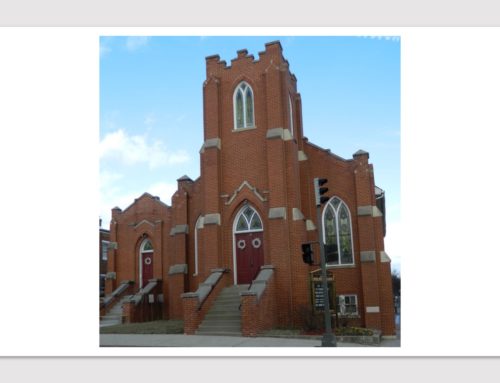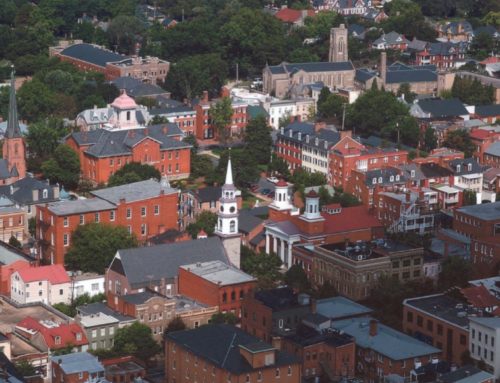Excerpt from the Frederick News-Post:
The Frederick Fairgrounds and a nearby chapel may be among the next properties recommended for a special historic designation.
The city Historic Preservation Designation Committee on Thursday reviewed the possibility of designating the East Patrick Street fairgrounds and St. Timothy’s Episcopal Church with historic preservation overlays. An overlay is an extra layer of regulations on top of zoning requirements already in place.
If approved, the designation would give the Historic Preservation Commission authority to review and approve major exterior changes to the properties.
The designation committee previously submitted recommendations for historic overlays at four other properties — the Frederick City Packing Co. building on Commerce Street, the Ox Fibre Brush Co. building at 400 E. Church St., the Schley House at 423 E. Patrick St. and the Union Mills building at 332-340 E. Patrick St. The Frederick Board of Aldermen in January approved the designations for all four sites.
Roughly two dozen sites were identified in the city’s 2010 Comprehensive Plan as potentially eligible for similar designations. The committee plans to continue making recommendations for or against designations on the remaining properties, including buildings associated with the Frederick Fairgrounds and St. Timothy’s.
The 135-year-old fairgrounds site provides information and context for the agricultural industry in Frederick, and the region as a whole, according to a report from the Maryland Historical Trust evaluating the site’s eligibility for the National Register of Historic Places.
The racetrack erected there in 1867 and the tunnel beneath it, built in 1916, are among the most historic central features on the East Patrick Street site, the report stated. A total of 39 buildings and structures contribute to the overall site history.
Committee member Carrie Albee, who also sits on the Historic Preservation Commission, called the fairgrounds a high priority property for preservation. Its significance is a “no-brainer,” she said.
The potential threat of losing those historic assets to demolition or subdivision makes a historic designation more critical, she added.
The nearby English Gothic-style, limestone building that houses St. Timothy’s Episcopal Church is also historically valuable, both in its its design and use as a working class “mission” chapel in the late 19th and early 20th centuries, the MHT report stated.
The site is flanked by residential and industrial buildings of a similar time period, as well as St. Timothy’s Church School across the street.
Several of these accessory buildings are affiliated with the history of the prominent Schley family. Other structures associated with Schley family’s life in Frederick have been recognized as a potential historic district known as the Schleysville Survey District under research completed through the city and documented with the Maryland Historical Trust.
The survey district research prompted committee members to consider creating a city version of the small area historic district, instead of designations of individual properties. The fairgrounds, too, could be protected under a district-type designation due to the number of historic buildings on the site.
Several committee members expressed support for the idea, although they agreed additional research was needed.
The mayor and aldermen have at times also said they prefer area designations to those for individual properties, according to Scott Winnette, chairman of the Historic Preservation Commission.
But, Matt Davis, the city division manager of comprehensive planning warned that the strategy could backfire.
“The odds are most folks may be opposed to it,” he said. “You may risk any of them being designated if you go that route.”
The committee will meet again on Feb. 25 to continue its discussion, including additional research on both properties and others potentially eligible for designations.



